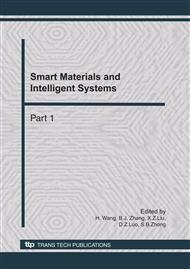[1]
Lee M K O, Turban E. A trust model for consumer Internet shopping. International Journal of Electronic Commerce, 2001, 6(1): 75-91.
DOI: 10.1080/10864415.2001.11044227
Google Scholar
[2]
Lu Yaobin, Zhou Tao. An empirical analysis of factors influencing consumers' initial trust under B2C environment. Nankai Business Review, 2005, 8(6): 96-101.
Google Scholar
[3]
Mechitov, A.I., H. Moshkovich, and D.L. Olson. The Master's Degree in E-commerce: A Survey Study, Journal of Computer Information Systems, 2002, 42(4): 29-35.
Google Scholar
[4]
Vijayasarathy L R. Predicting consumer intentions to use on-line shopping: The case for an augmented technology acceptance model. Information & Management, 2004, 41: 747-762.
DOI: 10.1016/j.im.2003.08.011
Google Scholar
[5]
Gefen D, Karahanna E, Straub D W. Trust and TAM in online shopping: An integrated model. MIS Quarterly, 2003, 27(1): 51-90.
DOI: 10.2307/30036519
Google Scholar
[6]
Bolton G E, Katok E & Ockenefls A. How effective are online reputation mechanisms. Working Paper, Smeal College of Business Administration, Penn State University, 2002. P23-P45.
Google Scholar
[7]
Andesron R E & Srinivasan S. E-satisfaction and e-loyalty; A contingency framework. Psychology and Marketing, 2003, 20(2): P123-P138.
Google Scholar
[8]
Mitchell, T. and J. Strauss. Practitioner and Academic Recommendations for Internet Marketing and E-commerce Curricula, Journal of Marketing Education, 2001, 23(2): 91-102.
DOI: 10.1177/0273475301232003
Google Scholar
[9]
Salam A F, Lyer L, Palvia P, Singh R. Trust in e-commerce. Communications of the ACM, 2005, 48(2): 73-77.
Google Scholar


